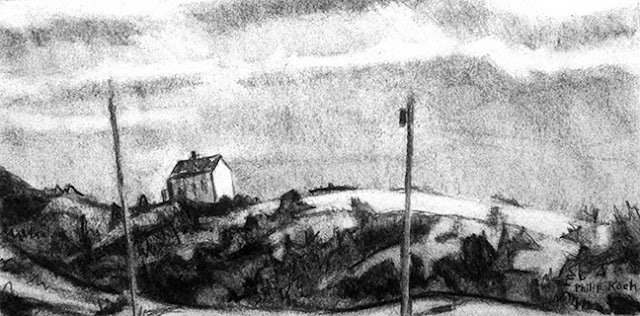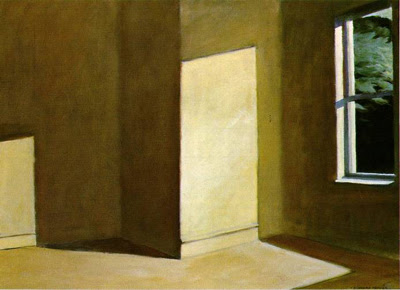Edward Hopper's Legacy: Taking His Eyes Seriously
Hopper, House on Middle Street, Gloucester, watercolor, 1924
Currier Museum of Art, Manchester, NH
The Edward Hopper House Art Center in Nyack, NY has asked me to be part of the program at their Annual Spring Benefit on Sunday, May 4. There will be tours, music and sparkling wine. I'm going to give a short talk on Hopper's legacy and how he has influenced me and other artists since his time.
The setting of Hopper House will do a lot of the talking for me.
Hopper, far more than many prominent artists of his generation, found his ideas in his immediate surroundings. The Hopper House Art Center, his boyhood home where he lived until he was approaching 30, in many ways was one of the key influences on how he saw the world. Above is one of his watercolors from the Currier Museum of Art. With its rhythm of irregular highlights and shuttered windows it's brimming with quirky personality. I believe that's in part because Hopper was open to seeing its potential as it so resembles the house he grew up in.
Hopper expressed himself by looking out at the world. He made his art so powerful by exercising the utmost selectivity as to what he would paint.
For all of us, 95% of what we see we pretty much dismiss. But a select few of the things around us are different and strike a chord in our inner, emotional side. A legendarily silent man, Hopper found himself able to express his inner life through painting. He became most powerful when he based his extremely poetic interpretations on the best of what he could see in his immediate surroundings.
In Hopper's day the modernist revolution was sweeping thought the art world. Probably the one realist painter who managed to be well regarded by all corners of the art world, modernist and traditional, was Hopper. He kept the faith with direct observation of the world as a key tool for art making. And his example gave encouragement to artists who would follow. Artists like me, who was tying myself in knots in my early years trying to make abstract paintings that I could believe in. When I discovered Hopper's work, I found the excitement, and I should add the courage, to swim against the tide and try another way.
Hopper kept alive a tradition from the artists who had gone down the road before him- searching through the mountain of all the different ways things can appear for just the most meaningful subject. One of the best examples of an artist who influenced Hopper was Winslow Homer (Am. 1836-1910), represented below by another elegantly poetic watercolor from the Currier Museum of Art's collection.
Winslow Homer, Fishwives, watercolor, 1883, Currier Museum
of Art, Manchester, NH
This Homer watercolor suits my point about how central looking is to our emotions, both in art in and in our personal lives. The three women above stand against the blustery winds staring out to sea, probably hoping for their loved ones' safe return. Homer makes you feel it with them. He saw such scenes when he lived in Britain in a poor fishing village for a year. Etched into his mind, such an image was a springboard for this moving painting.
Hopper House Art Center was kind enough to let me come and paint in several of its rooms. Here I am in Hopper's 2nd floor bedroom in the summer of 2012 working on my oil Sun in an Empty Room II.
Initial plans for the May 4 Benefit are for me to give a short talk on Hopper's art and influence standing right in this same room. Really, there could be no better setting.






